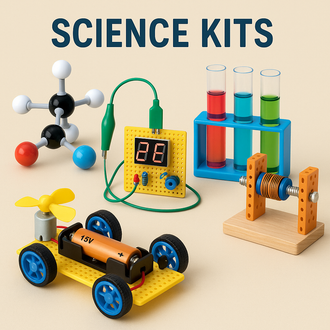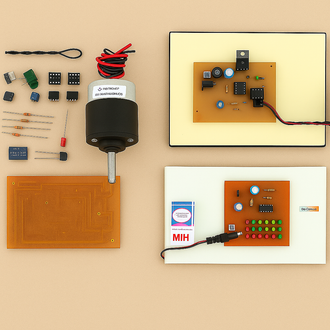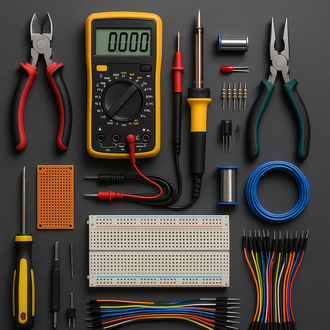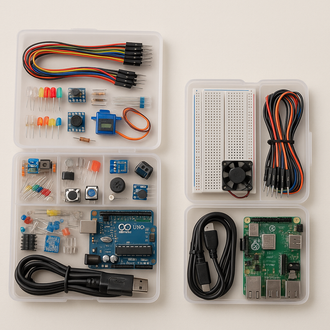
E-Bike Maintenance 101: Keeping Your Electric Bicycle in Top Shape
- 01 Nov, 2025
E-Bike Maintenance 101: Keeping Your Electric Bicycle in Top Shape
Your e-bike is a carefully balanced mix of bicycle parts and electric drive technology. You can increase your range, lower your service costs, and keep every ride feeling brand new with a little regular care. This useful guide includes daily checks, weekly and monthly routines, how to care for the drivetrain and brakes, how to check the electrical system, how to store the bike, and how to fix problems so that your electric bike stays smooth, safe, and efficient all year.
Every day and before riding — Quick Check (1 minute)
Before you ride, check these important things:
- Tires: Squeeze the sidewalls and fill them up to the PSI level printed on the tire to get more range and make them less likely to get a flat.
- Brakes: Squeeze both levers and feel for a firm bite without any grinding. Check for rubbing or squealing.
- Chain: Spin the cranks; if they make noise or are dry, plan to lube them quickly after the ride.
- Level of the battery: Check the charge and mount security. Make sure the contacts are clean and in the right place.
- Lights and display: Make sure that the headlights, taillights, and display are all working right.
Weekly Schedule (15–20 minutes)
- Clean and oil the chain: Wipe it down with a cloth, put drip lube on the rollers, back-pedal 10 to 15 times, and then wipe off the extra.
- Check the tires: Check for glass that is stuck in the tire, cuts in the sidewall, or squared-off tread that makes it harder to grip and range.
- Brake pads & rotors: Check the thickness of the brake pads and rotors (replace them when they get close to 1 mm). Use isopropyl alcohol to clean the rotors.
- Fasteners: Check the fasteners by lightly tightening the bolts on the stem, handlebars, fenders, and rack. Vibrations make hardware loose.
- Firmware and apps: If your display or app has updates, read the release notes and install them when they are stable.
Maintenance every month or season
- Wear on the drivetrain: Check the chain with a chain checker (0.5–0.75% stretch means it needs to be replaced). Check the teeth on the cassette and chainring.
- Wheel straightness and spoke tension: If your bike or stand wobbles from side to side, fix it right away.
- Checking cables and hoses: Check for leaks, kinks, or ends that are frayed. Smooth controls make you less tired.
- Suspension (if there is one): Clean the stanchions, check the sag and rebound settings, and wipe and re-lubricate the seals.
- Frame and mounts: Check the battery cradle, kickstand plate, and rear rack mount points for cracks.
How to Take Care of and Charge Your Battery
The battery is the most important part of an e-bike. Take care of it:
- Charging window: Try to keep the State of Charge between 20% and 85% when you use it every day.
- Storage: Store the pack in a cool, dry place (10–20°C) for long breaks, with about 50–60% of it full.
- Contacts: Make sure the terminals are clean and dry. A soft brush and some dielectric grease can help.
- Managing moisture: Don't pressure-wash the pack and don't charge it right after a wet ride; let it cool down to room temperature first.
- Security: When you park, use the key lock and think about getting a lock that is built into the frame.
If you want to upgrade or replace your electric bike motor battery, make sure the nominal voltage (for example, 36/48/52V), BMS discharge current, connector type, and physical dimensions match your controller and frame space.
Take care of your chain, cassette, and chainring.
A clean drivetrain protects the motor and gives it quiet power. When dirt gets on e-bike chains, it acts like grinding paste because e-bikes have more torque than regular bikes.
- Cleaning: Don't wash the freehub; just use a degreaser on the chain. Use a brush or rag to clean the sprockets.
- Lubrication: For monsoons, use wet lube; for dry seasons, use dry lube. Wipe off the extra to keep it clean.
- Replacement cadence: E-bikes usually need new chains every 1,000 to 2,000 kilometers, depending on how much power they use and the weather.
- Shifting: If shifting is loud when the bike is under load, check the hanger alignment and cable stretch.
Brake System: Pads, Rotors, and How to Set Them Up
Because e-bikes are heavier and faster, their brakes need more care.
- Materials for pads: resin pads are quieter, while metallic pads last longer and handle heat better on long descents.
- Beds-in procedure: 15 to 20 hard stops from a moderate speed to season the rotors and pads for the best grip.
- Hydraulic checks: Check for contamination or squish on the lever. Bleed if the lever pulls to the bar or feels soft.
- Rotor health: If the rotors are bent or blue, they need to be replaced. If the rotors change color when they get hot, they are overheating.
Wheels and Tires: Safety and efficiency when rolling
The shape of the tires affects comfort, grip, and range. Pick casings that protect against punctures and are rated for e-bikes.
- Pressure: More PSI is needed for heavier riders or cargo. If it's too soft, it will pinch flats; if it's too hard, it will lose grip.
- Tread: For city driving, go with slick or semislick; for all-weather driving, go with mixed tread; and for off-road driving, go with knobby.
- Sealant and liners: Tubeless setups with sealant lower the chance of flats and make riding more comfortable at lower PSI.
- Axles: Check the tightness of the thru-axle or QR on the wheels, and make sure the torque arms are on the motorized axles.
Taking Care of Your Motor: Hub vs. Mid-Drive
Most e-bikes have either a hub motor in the wheel or a mid drive motor at the crank. Each one has its own maintenance notes:
- Hub motor: Check the dropout faces, make sure the torque washers and arms are seated, and keep the axle nuts and bolts tight. Listen for clicking (loose hardware) or grinding (bearing wear). Make sure connectors are clean and free of stress.
- Mid-drive: Check the wear on the chain often, shift when the pedal force is low, and think about getting steel chainrings to make them last longer. Check the screws and bolts that hold the motor cover and the mounting bolts every so often.
Going from analog to e-assist? A cheap way to electrify your vehicle is to buy an electric hub motor kit. Just make sure the wheel size, dropout spacing, brake type, and controller are all compatible.
Health of Electronics and Controllers
Your controller turns sensor inputs into smooth motor power. Keep it safe and connected:
- Harness and connectors: Check for cables that are pinched, corroded, or have loose locking collars. Use dielectric grease only a little bit.
- Mounting and cooling: Controllers need air to work, so don't wrap them in bags or foam. Don't let pressure washers spray directly on you.
- Error codes: Look at the codes on the screen; a lot of them point to problems with the hall wiring or sensors.
When you replace or upgrade a controller ebike 48v, make sure the voltage, continuous/peak current, connector standards, throttle/brake cut-off plugs, and communication protocol match those of your display and motor.
Sensors, wires, and the interface
For help to be reliable, the inputs must be correct:
- Pedal assist (PAS): Make sure the magnet ring is centered and the pickup gap is even; if they aren't, the system will cut out.
- Brake cut-offs: Try both levers. If the power doesn't cut, change the worn reed switches or move the magnetic sensors.
- Throttle: Look for a return that sticks or cable runs that are frayed. Make sure the wire loops are big enough around the bars.
- Buttons and display: Use soft-touch buttons that are easy to clean, and don't use solvents on screens. Make sure the gaskets are waterproof.
Cleaning Without Hurting
Bikes last longer when they are clean, but electronics don't like to be washed hard.
- Method: Get a bucket, some mild bike shampoo, a soft brush, and a low-pressure rinse. Don't blast the bearings, motor ports, or the controller.
- Drying: Use a towel to dry the bike and let it air out. After cleaning, re-lube the chain and check the brakes again.
- Contact points: Wipe down the grips, saddle, and pedals to keep them comfortable and give you good traction.
Transport and storage
- Preference for indoors: Keep it inside or under a cover that lets air in. Cells and seals break down in very hot or very cold weather.
- Taking out the battery: When you transport the pack on car racks, take it out and carry it separately.
- Safety: Use a good U-lock and a second cable for the wheels and saddle. Also, write down the frame number.
A quick guide to fixing problems
- Not getting any power: Check the battery's on/off switch, the fuse, the contacts, and the alignment of the main harness.
- Help cuts out at random times: Check the PAS pickup gap, the brake cut-off activation, and the loose display plugs.
- Motor stutters: Check the hall sensor wires for damage, the pins for bending, or the connectors for water getting in.
- Bad range: Tires that aren't fully inflated, brakes that drag, a battery that's too cold, or a drivetrain that's not aligned can all use up energy.
- Clicking under load: When something is heavy, it can make a clicking sound. Common causes are crank bolts, pedal threads, or loose rear axle hardware.
Smart Upgrades for Long Life
- Brake pads and rotors: Heavy e-bikes have larger rotors (like 180–203 mm) and metallic pads that don't get hot.
- Tires: Puncture-proof casings and reflective sidewalls make things safer and keep them running longer.
- Drivetrain: Steel narrow-wide chainrings and hardened e-bike chains last longer.
- Motor system: Pick a hub motor or mid drive motor platform that has been tested and has a lot of parts support.
- Electrification: You can modernize an older frame cheaply by using an electric hub motor kit with a compatible controller ebike 48v and the right electric bike motor battery.
Checklists that you can print out (Copy/Paste)
Before the ride (every day): Tires, brakes, chain noise, battery level, and lights
Every week: Clean and oil the chain, check the thickness of the pads, wipe down the rotors, tighten the bolts, and update the app.
Every month: check the wear on the chain, the trueness of the wheels, the cables and hoses, the seals on the suspension, and the mounts for the frame and battery.
Questions and Answers
How often do I need to change my chain? Check every 500 to 700 kilometers on e-bikes with a lot of torque and replace 0.5 to 0.75 percent of the wear to save the cassette.
Can I ride in the rain? A lot of systems are water-resistant but not waterproof. Don't submerge or pressure wash; instead, dry and lube after wet rides.
What is the best pressure for tires? Start with the mid-range PSI number on your tire and change it based on how much weight the rider, cargo, and terrain add. Higher PSI means better performance, while lower PSI means more comfort and grip.
Do I need brake pads that are different? Use pads and rotors that are rated for e-bikes. Metal compounds work better for heavy or fast bikes.
Hub or mid-drive? A hub motor is easy to use, doesn't need much maintenance, and works well on flat ground. A mid drive motor climbs well and feels natural, but it needs more care for the drivetrain.
#hub motor #mid drive motor #e-bike battery #drivetrain #disc brakes #e-bike tires #controller #maintenance
At KitsGuru E-Bike Motors, you can look at motors, controllers, and batteries.
















